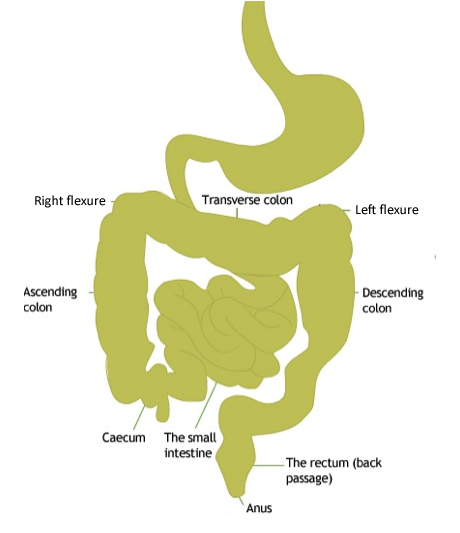About the digestive system
Normally, the food we eat passes from the mouth, down through the oesophagus and into the stomach, where it is churned up and digested by the stomach acids and enzymes.
Figure 1: The digestive system

The digested food is then released from the stomach into the small intestine where another group of enzymes digests it further. The food is then mixed by the churning action of the intestinal muscle wall. This breaks the food down so the nutrients can be absorbed through the surface of the small intestine and distributed to the rest of the body by the bloodstream. Most of the absorption of vitamins and minerals occurs in parts of the small intestine known as the jejunum and ileum.
After this, the food travels to the large intestine (colon) where most of the water from the food is absorbed back into the body. It forms a stool which is stored there until it is ready. The stool exits the body through the anus.
If the small intestine becomes inflamed – as it often is with Crohn’s disease – the intestine becomes less able to digest and absorb nutrients fully. This is one reason why people with Crohn’s disease can become malnourished.
Food that is not properly digested can also interfere with water absorption in the colon, leading to diarrhoea. In Ulcerative Colitis, the inflamed colon does not absorb water properly, leading to severe diarrhoea. Only very severe cases of Ulcerative Colitis affect the absorption of food.


